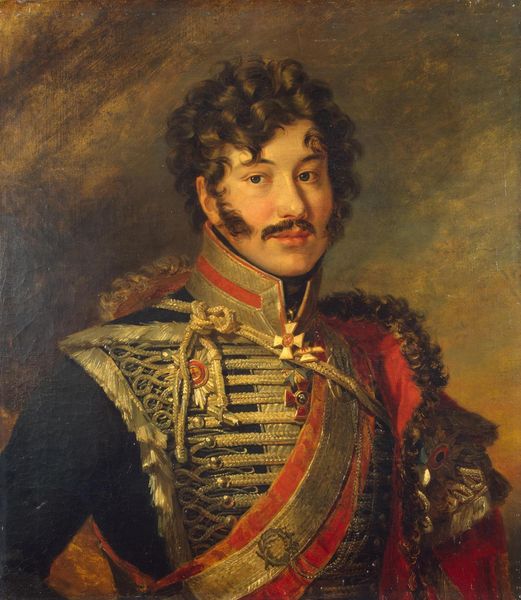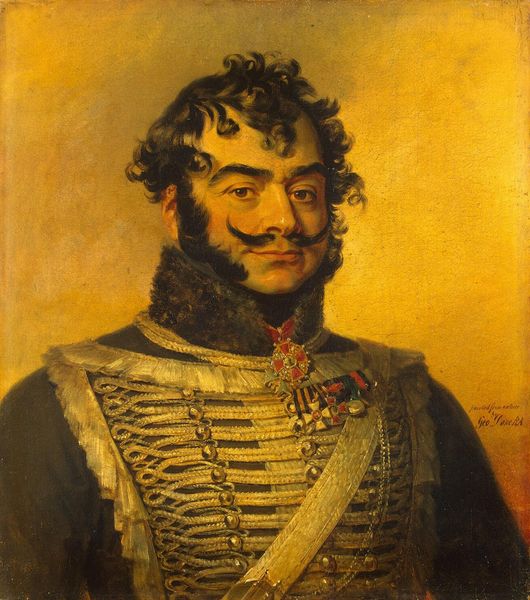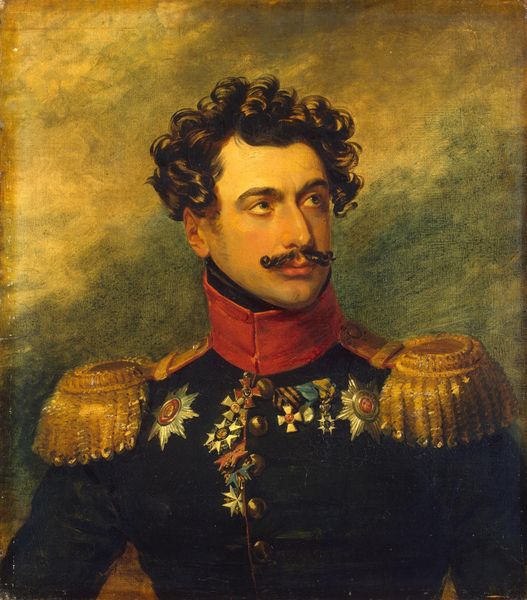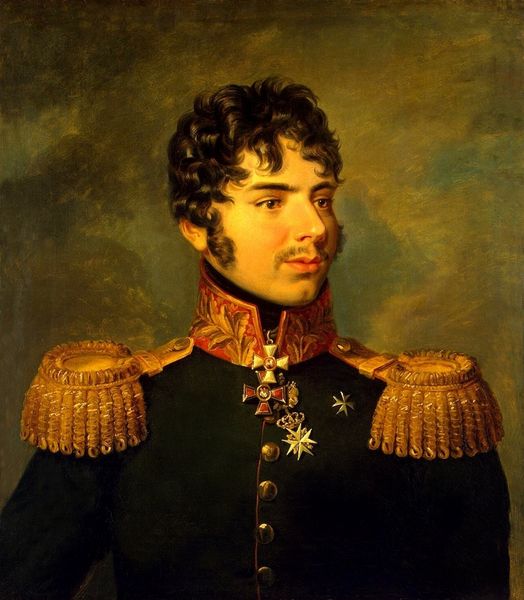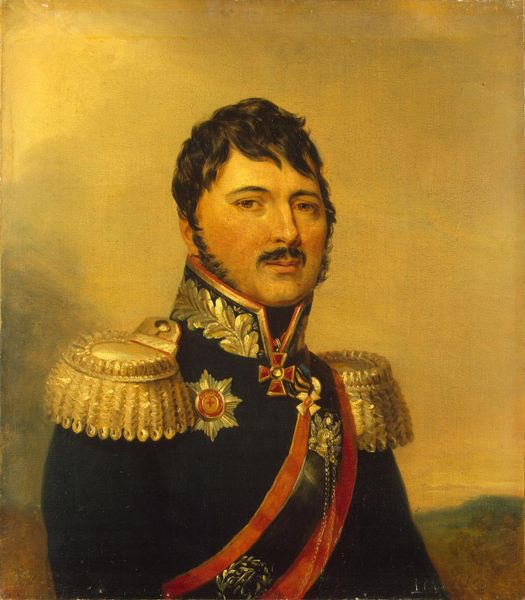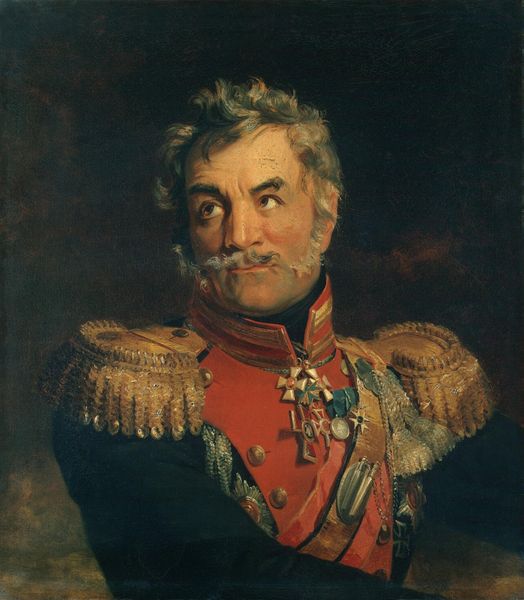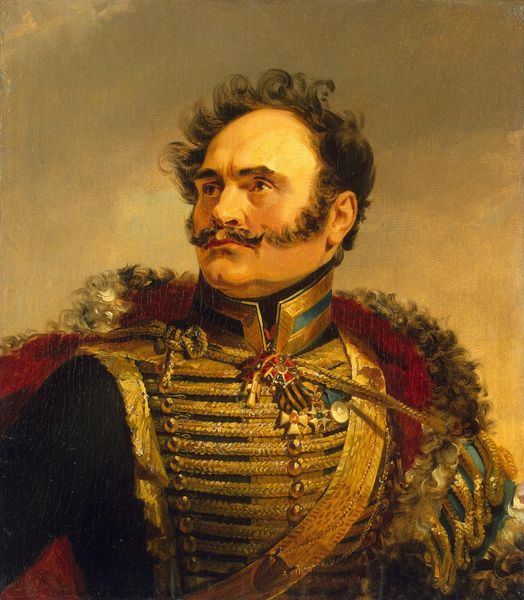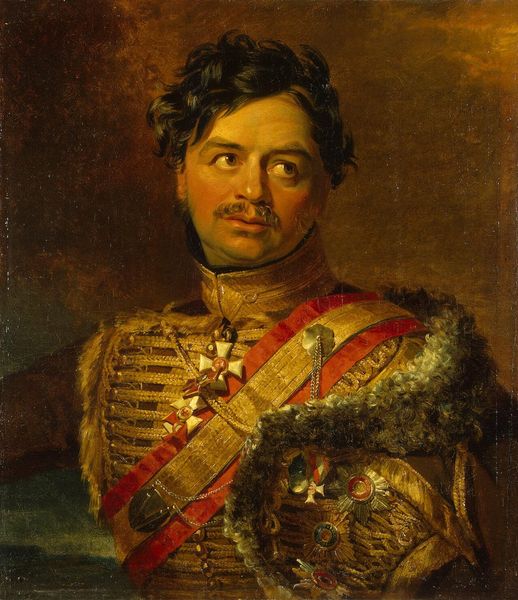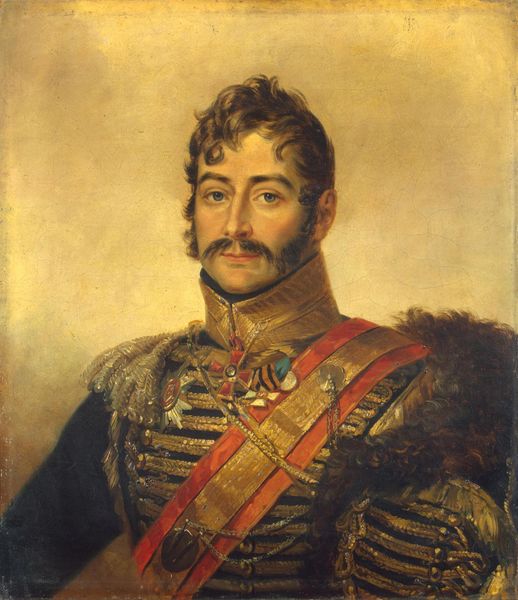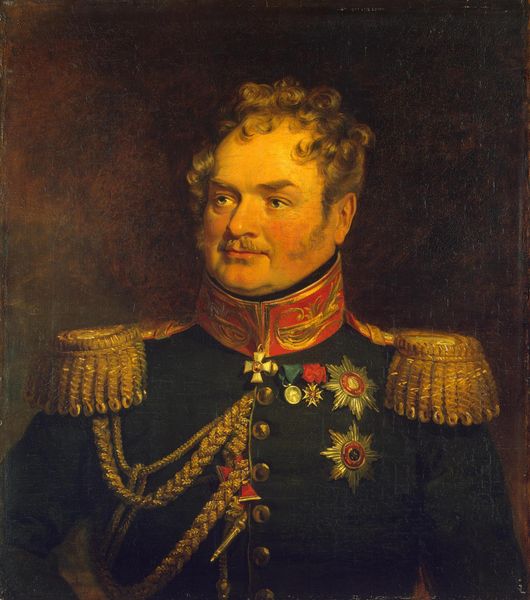
painting, oil-paint
#
portrait
#
portrait
#
painting
#
oil-paint
#
romanticism
#
history-painting
Copyright: Public domain
Editor: Here we have a portrait of Joseph Cornelius O’Rourke, a Russian General, by George Dawe. It's oil on canvas, and the museum that holds this painting says its date is unknown. He looks so stoic, confident even, but his face has a slight softness. What are your thoughts on this portrait? Curator: What strikes me is the undeniable performance of masculinity encoded within this image. Consider the meticulously styled hair, the stern gaze, and of course, the extravagant display of military regalia. Dawe isn’t merely painting a portrait; he’s constructing an image of power, one deeply entwined with the patriarchal structures of the 19th century. How do you think the trappings of the military contribute to this construction? Editor: It's almost a uniform that advertises his achievements. Those medals signify his service, and it seems that the medals themselves contribute to an expectation of traditional masculine norms, but does it feel contrived to you? Curator: I'm glad you mentioned the "contrived" aspect because it really underscores how these performances rely on specific social scripts and expectations. How do you feel this particular performance intersects with notions of class and social mobility during that period? Editor: I suppose displaying such finery and honors was a means to advertise someone's status, right? The opulence on display speaks volumes about who was considered worthy of historical representation. It's fascinating to consider the portrait not just as a likeness, but as a political statement. Curator: Exactly. And the questions this portrait raises – about power, representation, and the construction of identity – remain acutely relevant today, don't you think? Editor: Absolutely. It is very helpful to understand portraits this way because then you start seeing other ways artists subvert them, which then leads you to look deeper into cultural issues as they shift over time.
Comments
No comments
Be the first to comment and join the conversation on the ultimate creative platform.

